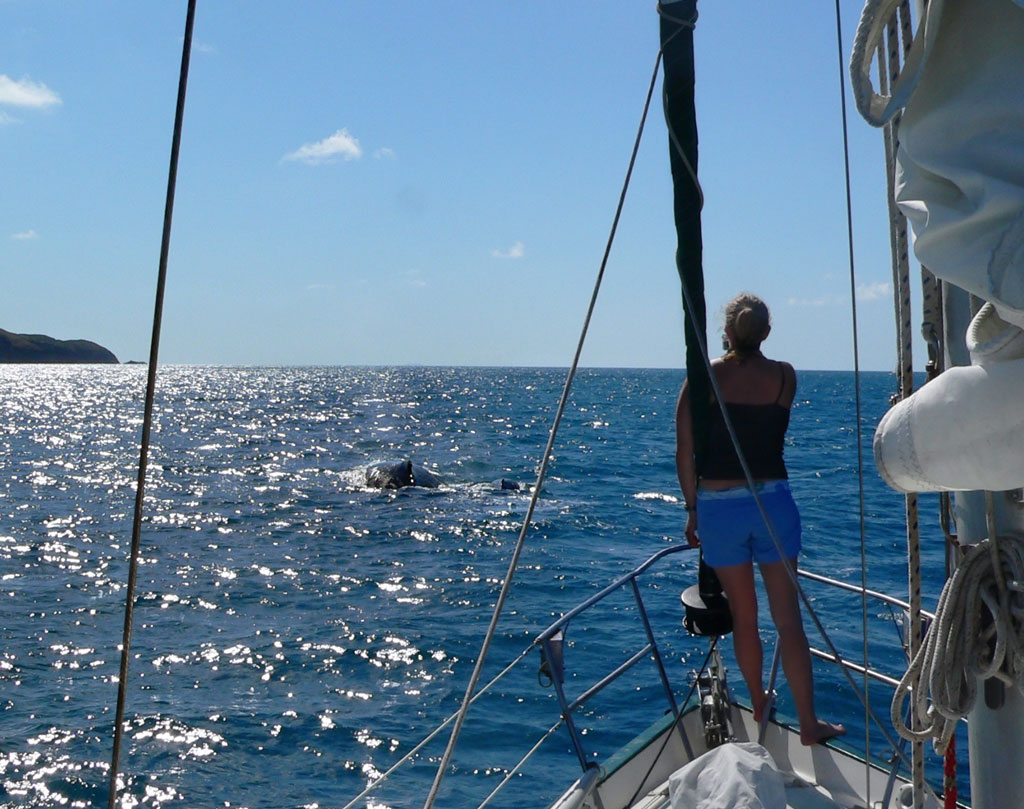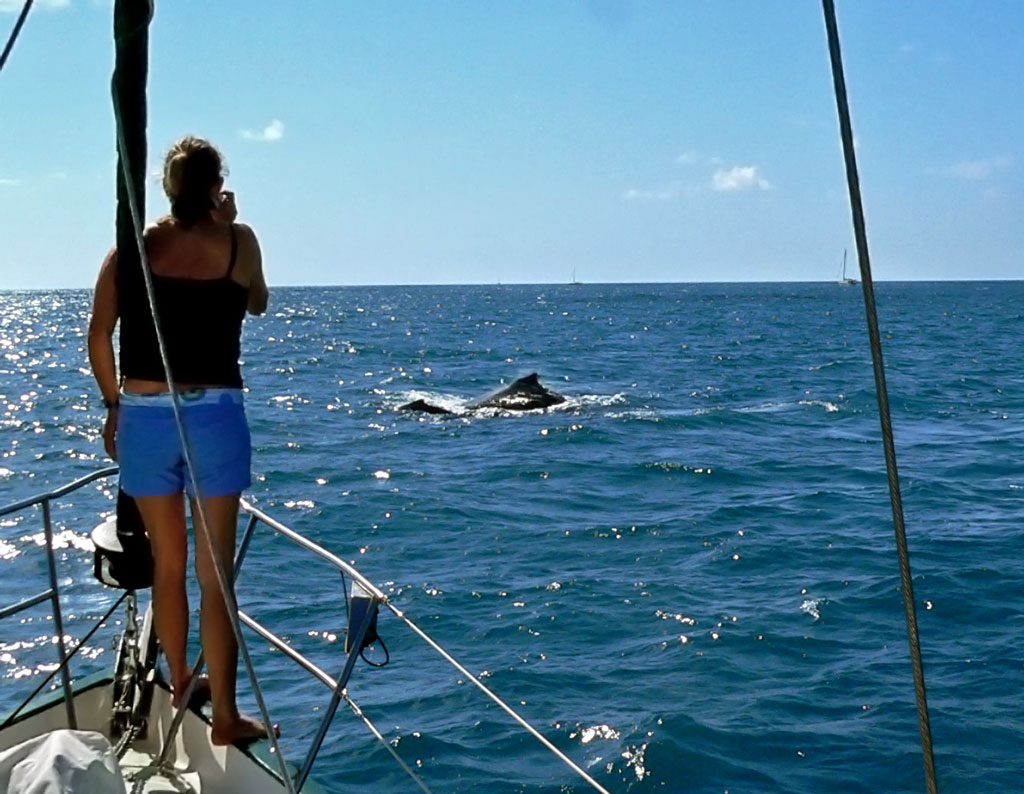Published in the Ocean Watch column, Honolulu Star-Advertiser © Susan Scott
Oct 13, 2006
While I was sailing in Australia recently, I read about a week-long whale celebration in a place called Hervey Bay. “What are they celebrating, exactly?” I asked my marina manager.
“The opening of whale season,” he said.
In the old days, that would have meant the kickoff to a killing spree. Today it means the opposite. What the man meant was that it’s the opening of whale watching season.
People in the area were honoring the fact that whales are alive, well and annually gracing Australian shores.
When my visiting friends and I discovered it was humpback whales causing the merriment, we jumped into our rental car and drove to the party. Humpback whales are like old friends to us Hawaii residents. We wanted to see how people in Hervey Bay regarded them.
Like angels from heaven, we learned. At the large harbor in the bay, a decorated dock held distinguished guests, local politicians and a minister. The minister offered prayers to all the boats involved in watching humpbacks as they migrate south through the bay.
The captain of each vessel took a turn driving to the dock to respectfully receive a blessing.
Among these boats were a volunteer marine rescue craft, a marine police launch, several tourist power boats and a few sightseeing sailboats.
We learned from the prayers, shared with the crowd by loudspeaker, that the owners and operators of these vessels have a common goal. All pledge to treat the humpbacks with the utmost respect, protect their habitat and teach visitors to do the same.
We were impressed and moved to see such homage paid to these gentle marine creatures.
Australia’s visiting humpbacks aren’t the same individuals that come to Hawaii, but they are the same species.
All humpback whales are travelers, swimming in all oceans of the world. These whales live in three distinct areas: the North Pacific, North Atlantic and Southern Ocean.
During the winter breeding time, all three groups migrate to warm, shallow waters along coasts or around oceanic islands. This further divides the population into specific breeding stocks.
During the summertime, though, when krill and other plankton multiply like mad in cold waters, these breeding stocks broadly overlap.
Humpback whales herd krill together by blowing bubble nets around the shrimplike creatures. The whale then rises up from below with its mouth open to scoop up its meal.
After the Hervey Bay whale festival, I sailed north along Australia’s east coast, and the humpback whales, on their way to Antarctica, didn’t disappoint.


They entertained me with their breaching, blowing and fin slapping. And then one day they were gone.
I usually miss the humpbacks when they leave; the ocean seems so empty. Not this year. Because Australia’s seasons are opposite ours, I get to watch these whales’ life cycle twice in one year.
Our first whales are already arriving from the North Pacific. It’s a marvel worth celebrating.